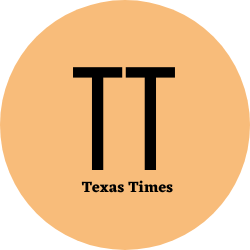Who is responsible for the removal of fallen trees?
by siteadmin

Trees can add beauty and value to your yard, but they can also be a serious safety hazard during storms.
You can plan ahead if you know who is responsible for the removal of fallen trees. This responsibility is determined by a few key factors: 1. Negligence or insufficient maintenance
Neighboring Property Owners
You are not liable if a tree on your property falls and damages a neighbor's property due to weather conditions or natural disasters. However, they still have the responsibility of inspecting and maintaining their trees.
You can use a variety of conflict resolution strategies when a neighbor's tree is too near your house or other structures, and an inspection shows that it needs to be removed. You can write to the neighbor and ask them to remove it, you can hire a tree law expert mediator to help settle it or even write directly to the owner. But whatever you do, don't climb without permission! You could be breaking the law and risking your life, as well as violating the terms of your homeowners insurance policy if you are caught!
Your Homeowners' Policy
Trees are an important part of our environment. However, they can be a challenge when they fall or need to be removed for safety reasons. Storm damage or diseased limbs could require their removal. In such cases, homeowners' policies usually cover repairs.
Homeowners' insurance usually covers their home, shed, fencing, and other structures, including any damage caused by fallen trees. This means that the homeowner is usually responsible for any damages caused by such events.
However, there may be exceptions. If, for example, a neighboring branch falls on your car or another structure without collision coverage but the damages are covered by an insurance policy it may be difficult to get the costs covered. It is important to inspect trees regularly to detect any signs of trouble and take appropriate action.
City or Town Ordinances and Agreements
Trees are a vital part of the design and aesthetics of a property. They add beauty and value, but can also cause problems for homeowners. Many disputes arise over who is responsible for removing or paying for damage caused by falling trees.
Typically, trees are the responsibility their landowner. However, if a tree becomes a nuisance and begins to negatively affect neighboring properties, it may fall to them to remove it. Landowners who knowingly maintain unhealthy or unsafe trees and do not take steps to remedy their condition can be held legally responsible for damages.
The city ordinances and township rules will determine who is responsible for clearing trees that fall on streets, sidewalks, or other public areas. This decision is usually made by local governments, but it could vary depending on whether you live in an urban or rural area.
Legal Issues
You could be held responsible if the trees on your land fall during a storm, causing property damage (including to their car). This is more likely if the trees were in poor health prior to their fall. Documentation and expert opinions will support this claim. Regular arborist inspections are recommended.
It can be very distressing when a tree falls on your property. Therefore, it is much better to take preventative measures to protect the trees of neighbors. Consult an attorney to discuss the facts of your case and determine if legal action is warranted. In the meantime, check your homeowner's insurance and contact a tree removal service. It is always cheaper upfront than to risk costly damages.
https://www.prvtreeservices.com/
Trees can add beauty and value to your yard, but they can also be a serious safety hazard during storms. You can plan ahead if you know who is responsible for the removal of fallen trees. This responsibility is determined by a few key factors: 1. Negligence or insufficient maintenance Neighboring Property Owners You are…
Recent Posts
- Experience Trusted Healthcare: Dr. Juan Pico’s Primary Care Practice in San Antonio
- Experience Trusted Healthcare: Dr. Juan Pico’s Primary Care Practice in San Antonio
- Carte Blanche Moving Revolutionizes Long Distance Moving Experience in Dallas-Fort Worth Metroplex
- 2 Gen Realty LLC Emerges as Top Realtor in Houston and Premier Real Estate Company in Dallas
- Advantage Local Marketing Revolutionizes San Antonio SEO Landscape
